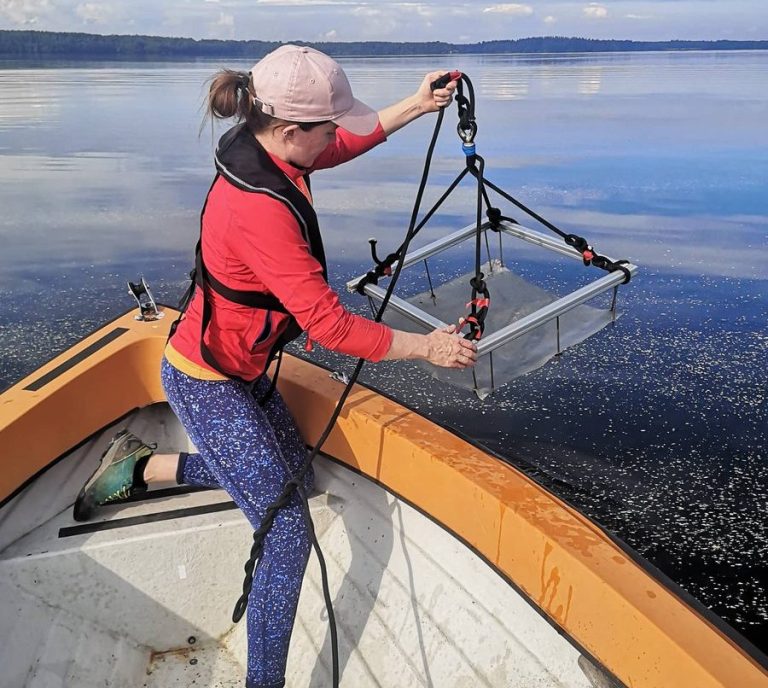
Biogeochemistry?
Biogeochemistry is combination of biology, chemistry and physics - the study of how chemical elements flow through biological organisms and the physical environment. Not considered the sexiest science! But often dealing with things so tiny they're almost invisible and so very important for understanding Earth's climate and health.
Oceanography?
Oceanography is the study of the world's oceans. Everything - the movements of 'invisible' chemicals and nutrients, the microscopic and big beautiful beasties, and processes like currents and tides. Did you know that biological activity in the ocean produces 50% of Earth's oxygen? That very fact is what inspired me to become a marine scientist.
Surface science?
Paper-thin and covering 70% of Earth's surface, the microlayer is one-millimetre thick and lies directly between air and water. Everything that moves between the atmosphere and ocean (and back again) must pass through the microlayer, so it is central to important climate processes - including greenhouse gas cycles.

The surface microlayer is physically, chemically and biologically different to the water immediately beneath it, so it is defined as a distinct ecosystem, and because of its unique position in the water column, an extreme environment. The microorganisms that live out their life cycles within the microlayer are exposed to much greater environmental forcing (wind, sunlight, heat) than the water below. These microorganisms release natural-chemicals, known as surfactants, that have particular properties where they partially dissolve in water and partially repel it - just like washing up liquid in your sink. They are happiest sitting at the interface between air and water, and create a micro-jelly-like layer that physically slows down the transfer of gases, such as carbon dioxide, between the atmosphere and ocean.
Accumulation of surfactants in the microlayer can sometimes be seen with the naked eye. In high concentrations they create super-flat areas of water, called surface slicks:

A natural surface slick
This is not a newly discovered phenomenon - throughout history, seafarers carried barrels of 'storm oil' onboard ships to throw overboard during stormy weather (this is where the idiom pour oil on troubled waters is rooted). The oil would leak through a hole in the barrel and spread out on the surface, calming the rough water around the ship. A New York Times article from December 1892 discusses this very thing.
The more recent development, has been the scientific acknowledgment of the climate significance of the microlayer. This is now a very active area of global multidisciplinary research, but being such a tiny layer, it is very challenging to sample or measure in-situ.
There are multiple techniques to sample the microlayer. The one I use most frequently is a Garrett Screen - named after William Garrett who invented the technique in 1965. It is a simple method that takes advantage of water surface tension: a stainless steel mesh lifts the thin surface layer from the water, that is collected into bottles for laboratory analyses.
